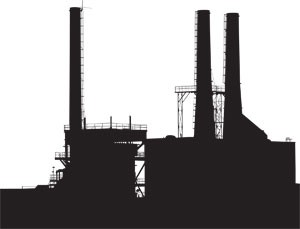Time is on their side
For years now, residents of the Toxic Triangle spawned by the former Kelly Air Force Base operations have worried that the federal agency charged with investigating the neighborhood’s liver, kidney, and leukemia cancer clusters has been willfully shortsighted, seeking answers everywhere (e.g. corn tortillas) but in the most obvious culprit: the 5-mile-plus plume of carcinogens such as TCE and PCE that flows under some 20,000 homes and businesses.
And, now, it appears, Congress is worried, too. In a report that cites Kelly as one of 10 egregious examples, the House Science and Technology Investigations and Oversight Subcommittee concludes that the Agency for Toxic Substances and Disease Registry “often obscures or overlooks potential health hazards, uses inadequate analysis, and fails to zero in on toxic culprits.
“Time and time again,” it continues, “ATSDR appears to avoid clearly and directly confronting the most obvious toxic culprits that harm the health of local communities throughout the nation.”
Perhaps of greatest interest to folks stuck in SA’s Toxic Triangle, toxicologist Katherine Squibb charges in the House report that ATSDR examined some health risks only after the contaminated soil had been remediated. Squibb also noted that a 1999 ATSDR study failed to measure important exposure pathways, and that the agency failed to adequately assess whether chemicals migrated off-base.
“It is questionable as to whether ATSDR’s conclusion that no public exposure to contaminants occurred through domestic use of groundwater in the past is correct,” wrote Squibb.
If the Feds have successfully remediated and foot-dragged themselves out of culpability, ATSDR is also angling for the time-covers-all-tracks camp. In response to a recent QueQue query, ATSDR spokesperson Jeff Dimond responded that the agency is no longer active at Kelly and would have to refer the matter to the EPA.
“EPA is not in a position to speak for ATSDR in this matter and must refer you back to them,” responded EPA Public Information Officer Dave Bary.
Dimond then ran the question “back up the flagpole,” which garnered a statement a week later from David Fowler, ATSDR Division of Health Assessment and Consultation, who was the lead health assessor for the Kelly AFB study.
“At the time of initial investigation in 1996, groundwater plumes were just beginning to move off base to the north (North Kelly Gardens) and south (Quintana Road) of the base,” wrote Fowler. “The groundwater plumes through and from East Kelly were not yet characterized … Because the plumes… were just beginning to move off base, because gas sampling in homes did not reveal a public health concern, and because the contaminated aquifer was not a source of drinking water, it was deemed unlikely that cancer elevations were caused by groundwater contamination.”
Cancer latency for most cancers may be 10 to 20 years or more, he added, and “the liver cancer was so widespread `in south San Antonio` that contamination from Kelly could not be the primary cause.”
But the House Sub-Committee on Science and Technology isn’t buying the agency’s verbal tap dance. At a hearing before the Committee last week, Chairman Brad Miller (D-N.C.) accused ATSDR of poor science and “a keenness to please industries and government agencies that prefer to minimize public health consequences of environmental exposures.”
Will the EPA do better? Results of recent indoor air testing by EPA to determine if chemical vapors are seeping into area homes are due to be released at the next meeting of the Kelly Restoration Advisory Board on April 14, where this new report is sure to be a hot topic of discussion as well. Keep an eye on QueBlog for a Current interview with Dr. Squibb.
Up in smoke
As the Kyoto Protocol fades like a West Texas vista in Big Bend’s coal-plant-generated haze, alarming news is seeping out of Copenhagen 2009: Scientists say the world is warming faster than the International Panel on Climate Change predicted just two years ago. Beachfront property is expected to disappear under a one-meter sea-level rise as early as 2100, sending millions, if not billions, of people scrambling for higher ground and the resources thereon.
“ ... so we would see a very extended period of conflict around the world, decades or centuries as hundreds of millions of people move,” economist Lord Stern warned the BBC.
Manhattan will not be immune, and even folks on the mountaintops are worried. Konrad Steffen of the University of Colorado told Voice of America’s Lisa Bryant that if the new models are correct, extreme climate change this century “will affect up to 600 million people that are living close to the coastline, and it will include major cities like New York.
“We already know that New Orleans is in the same way, but also areas like Bangladesh or smaller areas of islands that will be flooded within that one-meter sea level rise.”
But if the global-warming news that’s burning up the internets like Australian wildfires is reaching our local publicly owned utility, response has been bipolar. On one hand, we have a city government getting down with Mission Verde, the Mayor’s plan to make us a green, sustainable economy. On the other, CPS Energy is actively lobbying to prevent a federal cap-and-trade system to reduce carbon emissions — the primary long-lived gas reponsible for climate change.
You might call it unenlightened self-interest. What may represent one of the last coal-fueled power plants to be built in this country, CPS’s Spruce Two got under construction in 2005, long after the dangers of carbon emissions were well understood. Meanwhile, significant efforts to reduce energy consumption were not undertaken by the utility until this year, despite calls to do so five years ago and consultant studies showing investments in energy efficiency could make a new power plant unnecessary.
As a member of the Climate Policy Group, CPS Energy has taken the position that “a cap and trade system is not appropriate for controlling CO2 emissions due to the lack of affordable, reliable, and commercially available control technologies.”
If you can’t fight ’em at home, though, you can take your message to Capitol Hill. A cap-and-trade bill to begin reducing national greenhouse emissions is expected to be pushed to Congress for debate in the coming weeks. Don’t forget to call Congressman Charlie Gonzalez to weigh in (202-225-3236). And look for Greg Harman’s in-depth report on the issue in next week’s Current, and online at sacurrent.com.
Rhett letter day
If it’s an election year in San Antonio, you know Rhett Smith will be on the ballot. In recent years, Smith has made noisy but unsuccessful runs for mayor, Congress, and the County Commission (last November, he filed a federal civil-rights complaint against County Commissioner Kevin Wolff and Alamo Heights ISD for blocking a planned 2008 candidate forum). This year, he’s making another bid for mayor, and on March 12 he polished his rep as SA’s reigning free-speech martyr by crashing a Republican Business Women of Bexar County debate at St. Mark’s Episcopal Church. Smith says when he made his way upstairs to the debate hall, a PAC rep told him to leave the premises. At that point, the snub escalated into a farce, with Smith calling 911.
Bringing SAPD into the crosshairs of a political dustup might have been a bit extreme, but there are a few questions worth asking about the debate. For one thing, the event was billed as a forum for “all candidates for mayor of San Antonio.” By that standard, Smith should have been included.
The PAC also promised that the gathering would feature “appearances by the Republican City Council candidates.” QueQue thought we were still living under the illusion that our Council candidates are non-partisan — not that we didn’t notice Delicia Herrera and Philip Cortez whooping it up at the November 4 Obama victory bash. But if a local GOP PAC can target which candidates work for their team (and exclude everyone else), why not end the charade and have our candidates go public with their party affiliations?
Finally, should local churches be in the business of hosting gatherings sponsored by a political action committee, propagating the cause of a particular party? After all, even GOP-leaning pastor Rick Warren showed the courtesy to invite both John McCain and Barack Obama to his Saddleback Church last summer.
Also: the IRS frowns upon it.
“It was a mistake by both parties,” said Parish Administrator Bill Edwards. One that won’t happen again. “As a result of that situation, there is not going to be anymore political anybody.”
The Republican Business Women of Bexar County did not respond to the Current’s interview request.•



